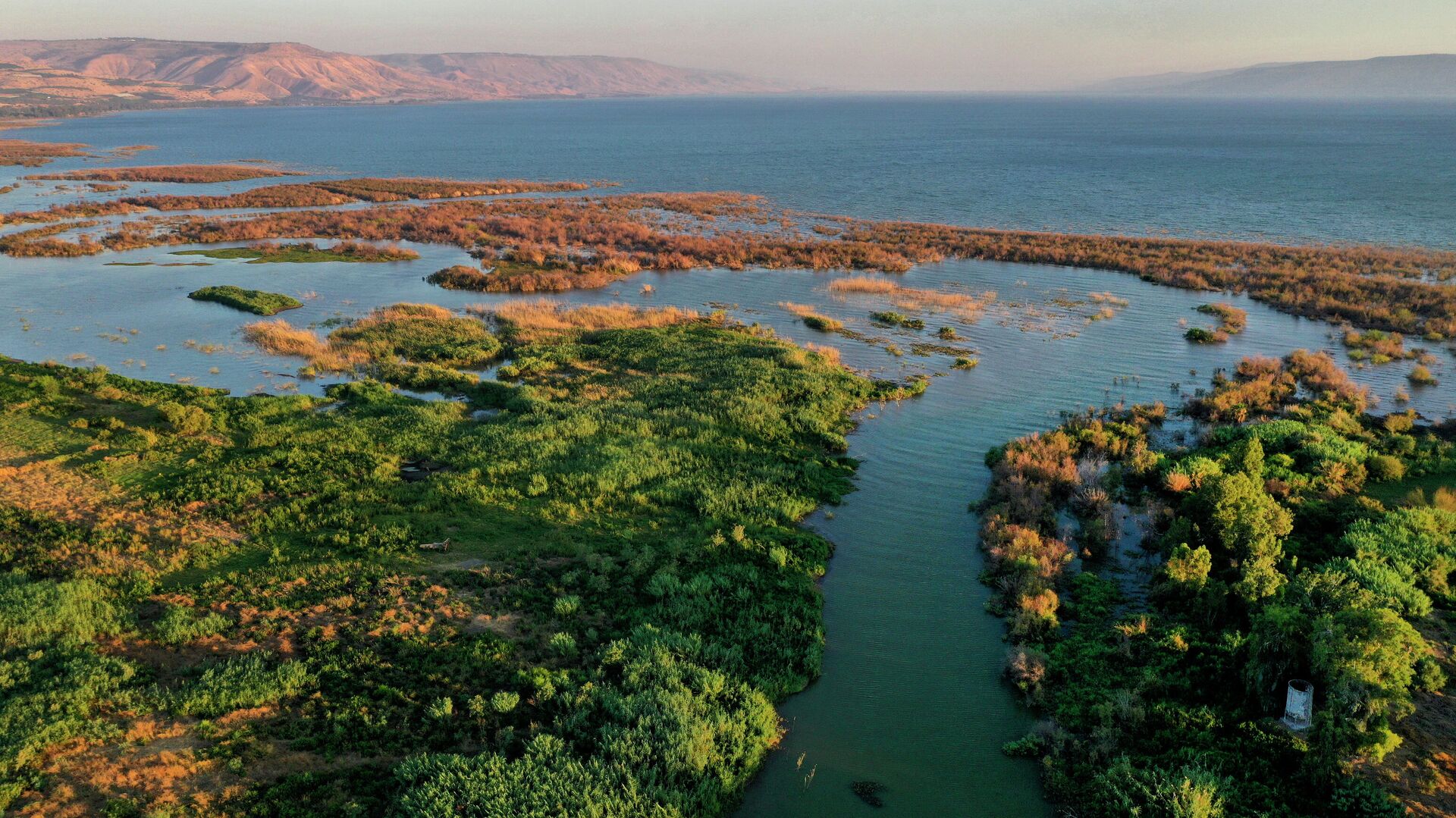https://sputnikglobe.com/20211020/new-findings-in-church-of-the-apostles-in-bethsaida-archaeologists-discovered-1090084084.html
New Findings in ‘Church of the Apostles’ in Bethsaida, Archaeologists Discovered
New Findings in ‘Church of the Apostles’ in Bethsaida, Archaeologists Discovered
Sputnik International
Initial excavations at El-Araj in 2019 identified it with the Church of the Apostles visited by a Bavarian bishop named Willibald in 725 C.E. The findings... 20.10.2021, Sputnik International
2021-10-20T21:58+0000
2021-10-20T21:58+0000
2022-10-19T20:18+0000
church
excavations
middle ages
sea of galilee
archaeology
https://cdn1.img.sputnikglobe.com/img/07e5/0a/14/1090084180_0:154:3092:1893_1920x0_80_0_0_4018cb847946a6f3c3294895e072e273.jpg
During the fifth season of archaeological excavations at the site of Beit Habek (el-Araj), researchers identified inscriptions that helped solidify their belief that this was the church of Jesus' disciples, the real Bethsaida on the shore of the Sea of Galilee.The location of Bethsaida, a fishing village on the Sea of Galilee, visited by Jesus (Luke 9:10) and home to apostles Peter, Andrew and Philip (John 1:44), according to the Gospels, was said to have been destroyed and mysteriously “buried” by an earthquake in 749 along with the “lost home of Jesus’s apostles.”For the past five years, Professor Mordechai Aviam in collaboration with Professor R. Steven Notley — both researchers from Nyack College and Mordechai Aviam of Kinneret Academic College of the Galilee — have led teams of archaeologists, students and Bible enthusiasts on yearly excavations in El-Araj.In 2020, excavations were suspended due to the COVID-19 pandemic and flooding caused by near record-breaking rainfall in Galilee. Notley and Aviam returned to El-Araj during the summer of 2021 with hopes of exposing the entire mosaic floor discovered in 2019, and finding inscriptions within the ruins of the Byzantine church that could help them date and properly identify the site as the home of Andrew and Peter.The 2021 excavation season 5, which took place from October 1 through October 15, opened new squares in an effort to reveal the size and more of the Roman structures that were underneath the surface of the Byzantine church.During the summer excavation just completed, researchers found proof that the Byzantine-period edifice was a major church — an elaborately decorated house of worship built in the late fifth or early sixth century with gorgeous mosaic floors and inscriptions.Subject to further archeological investigation, researchers hypothesize that the doorless structure with sealed ruins could presumably be the basement of a Middle-Aged sugar factory that was built there, or that the church was intentionally or “ritually buried” after its destruction out of respect.
sea of galilee
Sputnik International
feedback@sputniknews.com
+74956456601
MIA „Rossiya Segodnya“
2021
News
en_EN
Sputnik International
feedback@sputniknews.com
+74956456601
MIA „Rossiya Segodnya“
Sputnik International
feedback@sputniknews.com
+74956456601
MIA „Rossiya Segodnya“
church, excavations, middle ages, sea of galilee, archaeology
church, excavations, middle ages, sea of galilee, archaeology
New Findings in ‘Church of the Apostles’ in Bethsaida, Archaeologists Discovered
21:58 GMT 20.10.2021 (Updated: 20:18 GMT 19.10.2022) Initial excavations at El-Araj in 2019 identified it with the Church of the Apostles visited by a Bavarian bishop named Willibald in 725 C.E. The findings revealed the remains of a large Byzantine church — complete with multicolored mosaics in geometric patterns, built over the house of the apostles Peter and Andrew, on the shore of Galilee.
During the fifth season of archaeological excavations at the site of Beit Habek (el-Araj), researchers
identified inscriptions that helped solidify their belief that this was the church of Jesus' disciples, the real Bethsaida on the shore of the Sea of Galilee.
The location of Bethsaida, a fishing village on the Sea of Galilee, visited by Jesus (Luke 9:10) and home to apostles Peter, Andrew and Philip (John 1:44), according to the Gospels, was said to have been destroyed and mysteriously “buried” by an earthquake in 749 along with the “lost home of Jesus’s apostles.” For the past five years, Professor Mordechai Aviam in collaboration with Professor R. Steven Notley — both researchers from Nyack College and Mordechai Aviam of Kinneret Academic College of the Galilee — have led teams of archaeologists, students and Bible enthusiasts on yearly excavations in El-Araj.
In 2020, excavations were suspended due to the COVID-19 pandemic and flooding caused by near record-breaking rainfall in Galilee. Notley and Aviam returned to El-Araj during the summer of 2021 with hopes of exposing the entire mosaic floor discovered in 2019, and finding inscriptions within the ruins of the Byzantine church that could help them date and properly identify the site as the home of Andrew and Peter.
The 2021 excavation season 5, which took place from October 1 through October 15, opened new squares in an effort to reveal the size and more of the Roman structures that were underneath the surface of the Byzantine church. During the summer excavation just completed, researchers found proof that the Byzantine-period edifice was a major church — an elaborately decorated house of worship built in the late fifth or early sixth century with gorgeous mosaic floors and inscriptions.
Subject to further archeological investigation, researchers hypothesize that the doorless structure with sealed ruins could presumably be the basement of a Middle-Aged sugar factory that was built there, or that the church was intentionally or “ritually buried” after its destruction out of respect.

